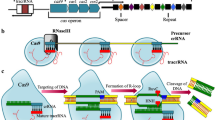Abstract
Since Darwinian times considerable knowledge has accumulated on the distribution, physiology and genetics of self-incompatibility (SI) in higher plants. In the second half of this century the first attempts were made to identify the biochemical bases of SI. These included thediscovery that cutinase enables pollen tube penetration at the surface* of the stigma in Cruciferae, sorting of segregation pollen S-phenotypes by serological techniques, a lock-and-key model of the SI reaction, the first detection and characterisation of SI proteins and the discovery of the role of the tapetum in the determination of pollen phenotypes in homomorphic sporophytic SI. This pioneering work was followed by a worldwide effort to identify and understand the cellular and molecular processes which lead to the recognition and rejection of SI pollen. The present review article summarizes briefly the current state of knowledge in areas essential for the understanding and exploitation of SI and outlines new information that has become available during recent years.
Similar content being viewed by others
Author information
Authors and Affiliations
Additional information
Received: 14 March 1997 / Revision accepted: 10 June 1997
Rights and permissions
About this article
Cite this article
de Nettancourt, D. Incompatibility in angiosperms. Sex Plant Reprod 10, 185–199 (1997). https://doi.org/10.1007/s004970050087
Issue Date:
DOI: https://doi.org/10.1007/s004970050087




